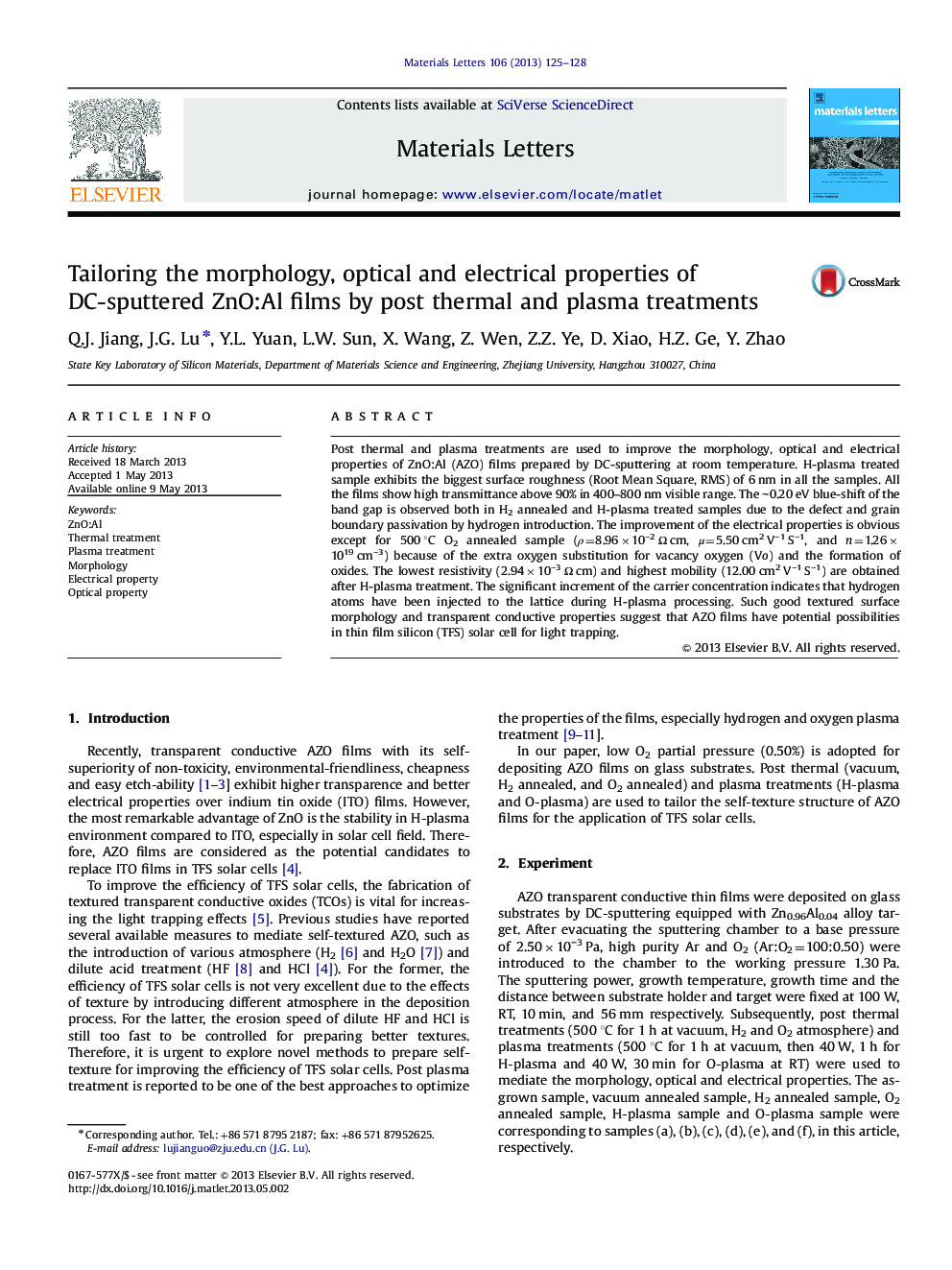| Article ID | Journal | Published Year | Pages | File Type |
|---|---|---|---|---|
| 8022241 | Materials Letters | 2013 | 4 Pages |
Abstract
Post thermal and plasma treatments are used to improve the morphology, optical and electrical properties of ZnO:Al (AZO) films prepared by DC-sputtering at room temperature. H-plasma treated sample exhibits the biggest surface roughness (Root Mean Square, RMS) of 6 nm in all the samples. All the films show high transmittance above 90% in 400-800 nm visible range. The â¼0.20 eV blue-shift of the band gap is observed both in H2 annealed and H-plasma treated samples due to the defect and grain boundary passivation by hydrogen introduction. The improvement of the electrical properties is obvious except for 500 °C O2 annealed sample (Ï=8.96Ã10â2 Ω cm, μ=5.50 cm2 Vâ1 Sâ1, and n=1.26Ã1019 cmâ3) because of the extra oxygen substitution for vacancy oxygen (Vo) and the formation of oxides. The lowest resistivity (2.94Ã10â3 Ω cm) and highest mobility (12.00 cm2 Vâ1 Sâ1) are obtained after H-plasma treatment. The significant increment of the carrier concentration indicates that hydrogen atoms have been injected to the lattice during H-plasma processing. Such good textured surface morphology and transparent conductive properties suggest that AZO films have potential possibilities in thin film silicon (TFS) solar cell for light trapping.
Related Topics
Physical Sciences and Engineering
Materials Science
Nanotechnology
Authors
Q.J. Jiang, J.G. Lu, Y.L. Yuan, L.W. Sun, X. Wang, Z. Wen, Z.Z. Ye, D. Xiao, H.Z. Ge, Y. Zhao,
